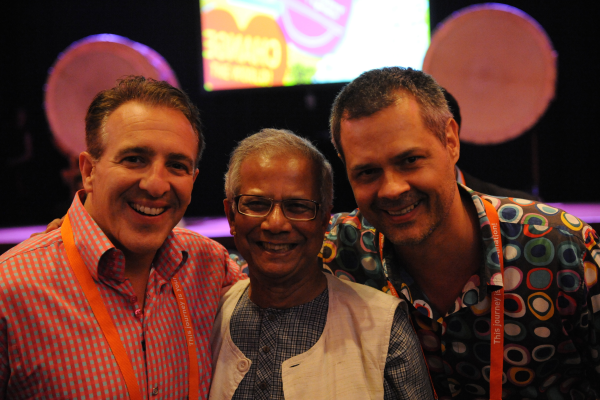A Grassroots Strategy
 Many people look at growing a business as a task of how to reach the largest audience and make the most sales as quickly as possible. From my perspective, it takes time to grow a business and get a product or service out into the market. You can start big with lots of capital, or you can grassroots your product to a small group and let it manifest from there.
Many people look at growing a business as a task of how to reach the largest audience and make the most sales as quickly as possible. From my perspective, it takes time to grow a business and get a product or service out into the market. You can start big with lots of capital, or you can grassroots your product to a small group and let it manifest from there.
If you have capital, and can spend it, go for it. Venture capitalists and other investor types tend to introduce a lot of control and other issues if it’s something they take an interest in. Grassroots is the way most of us will either make it or break it in the marketplace.
Back in 1995 when I started the mutual fund, I didn’t have a huge amount of capital or a vast array of clients with a ton of money. In fact, when we started the fund we required $100,000 of seed money, according to SEC rules at that time. Between my firm and my clients, we didn’t have enough to drop into a new fund. What we did have was a history of financial planning and money management clients that trusted us, so 6 of us came together to seed the fund.
With a little bit of time, we added other clients that helped to build our assets via monthly investment programs set up through the University. Usually this came in increments of $50 to $500 per month, and moved over small $5,000 and $10,000 amounts from other accounts as the trust grew. We hit $2M the first year, then $5M the second. This grassroots process lead to a fund that went to almost $700M in assets in 5 years, and took the firm to $1B in assets. Now that was a one-step-at-a-time, true grassroots process.
Now I have focused my efforts on a new one. We are launching a new product that helps companies with the process of gathering requirements for projects. To do this, we have to expose a beta version of this product to companies that could potentially be core clientele, would find the product useful and most of all be interested in what we’re doing in order to provide us valuable feedback. If they like it, they will share it.
One way to take a grassroots approach to the next level is to attach it to another product or service that has already gone through it. We have opened up our requirements gathering tool Sluice for users to integrate with Basecamp, which is a project management software tool. After requirements gathering, project management is the next step, making this a mutually beneficial relationship. Basecamp has successfully grown to having over 5 million users today.
I remember reading this blog post some time ago from Seth Godin where he said:
“Find ten people. Ten people who trust you/respect you/need you/listen to you…
Those ten people need what you have to sell, or want it. And if they love it, you win. If they love it, they’ll each find you ten more people (or a hundred or a thousand or, perhaps, just three). Repeat.”
 Marshall says that focused feedback and follow up are the keys to successful team building. He has a 14 step process that alone is fairly simple to implement, but it’s the follow up that requires determination to make it successful. I will share the first 7 steps below:
Marshall says that focused feedback and follow up are the keys to successful team building. He has a 14 step process that alone is fairly simple to implement, but it’s the follow up that requires determination to make it successful. I will share the first 7 steps below:


